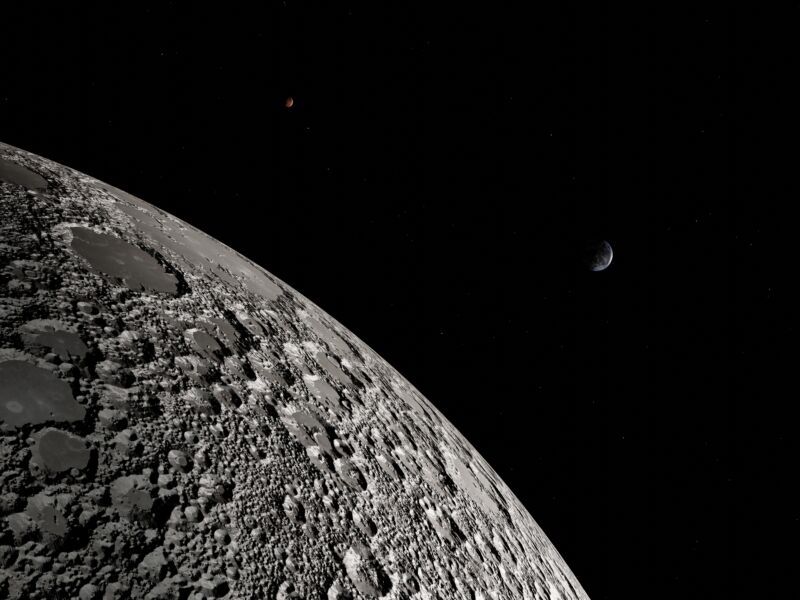
Seismic waves created by earthquakes as they travel through the planet's interior change speed and direction as they move through different materials. Things like rock type, density, and temperature all alter the travel of these waves, allowing scientists to gradually build up a picture of the Earth's crust and mantle, spotting things like the rise of plumes of hot mantle material, as well as the colder remains of tectonic plates that dropped off the surface of the Earth long ago.
There are some things that show up in these images, however, that aren't easy to explain. Deep in the Earth's mantle there are two regions where seismic waves slow down, termed large low-velocity provinces. This slowdown is consistent with the materials being higher density, so it's not really a surprise that they're sitting near the core. But that doesn't explain why there are two distinct regions of them or why they appear to contain material that has been there since the formation of the Solar System.
Now, a team of scientists has tied the two regions' existence back to a catastrophic event that happened early in our Solar System's history: a giant collision with a Mars-sized planet that ultimately created our Moon.
Hard to explain
A number of explanations for these large, low-velocity provinces have been offered, but none of them are entirely satisfactory. One idea is that they're leftovers from the process by which the Earth's interior separated into its crust-mantle-core structure. But that material should have been thoroughly churned up when a Mars-sized object, which has picked up the name Theia, smashed into the early Earth, leaving enough debris in orbit to form the Moon.
Other suggestions include the idea that these might be the remains of tectonic plates that sank to unusual depths in the mantle. But this doesn't account for what this material looks like when mantle plumes bring some of it to the surface via volcanism. When sampled, the ratios of isotopes in gasses trapped in this material look like those that were expected to be present in the early years of the Solar System, and not like those found in the crust today.
The team behind the new paper suggests that a completely different source could explain the odd properties of these large low-velocity provinces. Relative to the Earth, the Moon has a lot more iron oxide, which suggests that Theia also had a lot of this material. Since iron oxide is more dense than a lot of other mantle material, it could explain that property of the large low-velocity provinces. In addition, the collision would have taken place early in the Solar System's history, which could explain why the isotope ratios look primordial.
The big problem with this idea is that the material from Theia would also have been churned up in the wake of the collision, so it's hard to understand how it could form discrete layers inside the Earth. So, the researchers modeled the Earth's interior, both during and after the collision, to better understand how things might work.



3175x175(CURRENT).thumb.jpg.b05acc060982b36f5891ba728e6d953c.jpg)
Recommended Comments
There are no comments to display.
Join the conversation
You can post now and register later. If you have an account, sign in now to post with your account.
Note: Your post will require moderator approval before it will be visible.